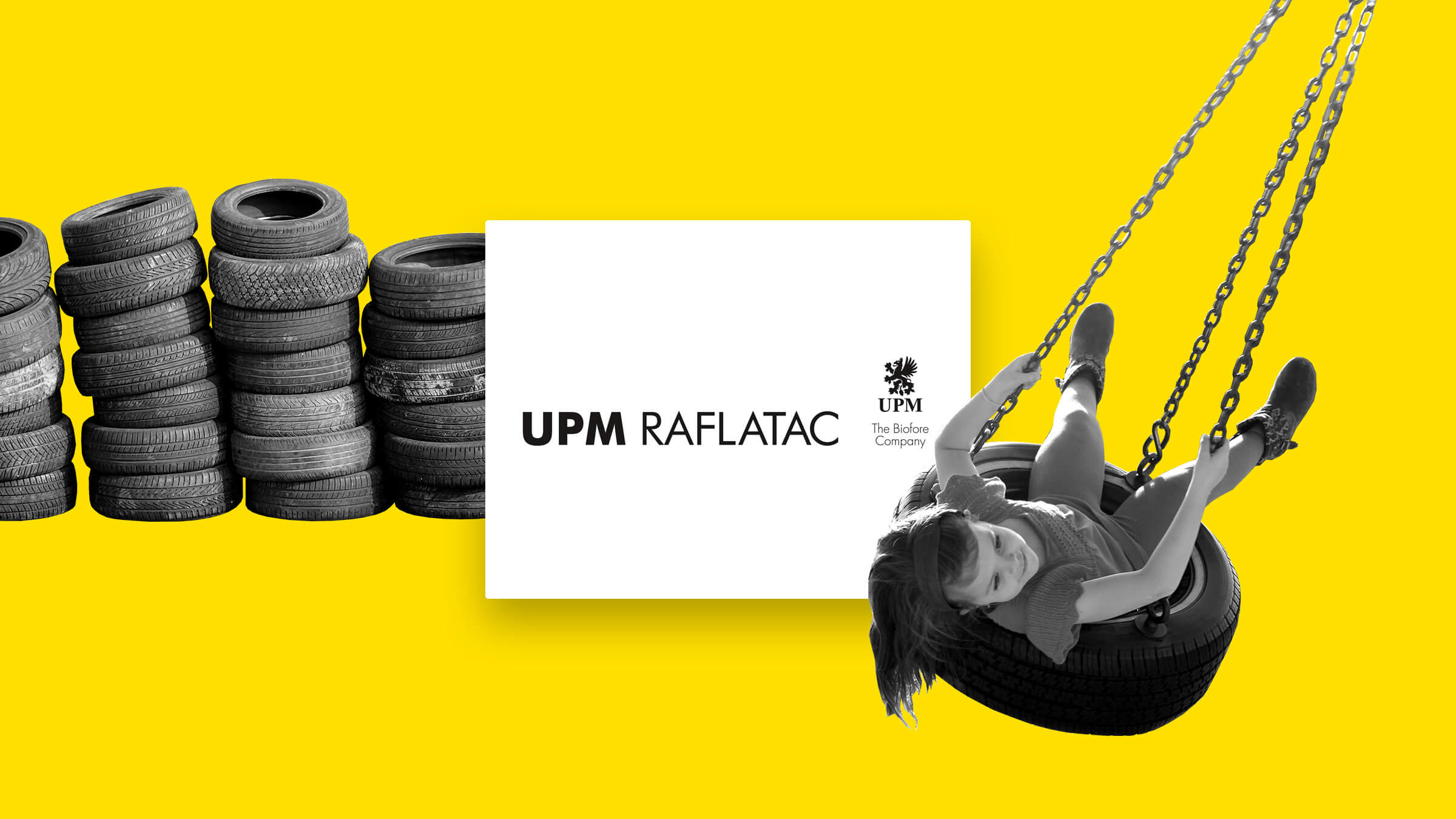Problem
Waste is created in the manufacture of adhesive label laminates, during the printing house printing process and when the adhesive labels are attached. These are difficult to recycle; adhesive laminates and their backing paper include several different components, such as plastic, paper, silicone and glue. This type of waste is difficult to recycle, and often has to be burned. On a European scale, up to 600,000 tonnes a year of this type of waste is created.
Solution: from adhesive label waste to raw material paper and biocomposites
The UPM service concept RafCycle® recycles adhesive label waste as raw materials for paper and biocomposites. The waste is collected at UPM’s own Raflatac plants and from the production facilities of customers and end users. These waste streams have their own useful applications. The company’s internal and its customers’ adhesive label laminate waste is used in UPM Profi wood plastic composite, which is used to make patio boards, for example. In turn, the backing paper of the labels is collected from end users and used to produce recycled paper. The backing paper of the labels includes a small percentage of silicone and the company has created its own technology for separating it. Using the concept, the recycling of European label waste collected by UPM Raflatac is growing at approximately 20 per cent a year.
Revenue logic and benefits to UPM Raflatac
UPM collects the label waste from its customers and end users using its tight-knit supply network. This allows the company to both offer its customers an easy recycling solution and improve their access to paper for recycling. Using the concept, UPM is able to be in closer contact with both its customers and the end users of the labels and can better understand their needs.
Benefits to customers and end users
UPM Raflatac’s customers gain a solution to a waste problem and are better able to reduce their environmental load. The company organises the collection and transport of the waste directly from the site where it is generated. At the same time, the waste that previously generated costs can be disposed of with lower costs.

















Recommended
Have one more?